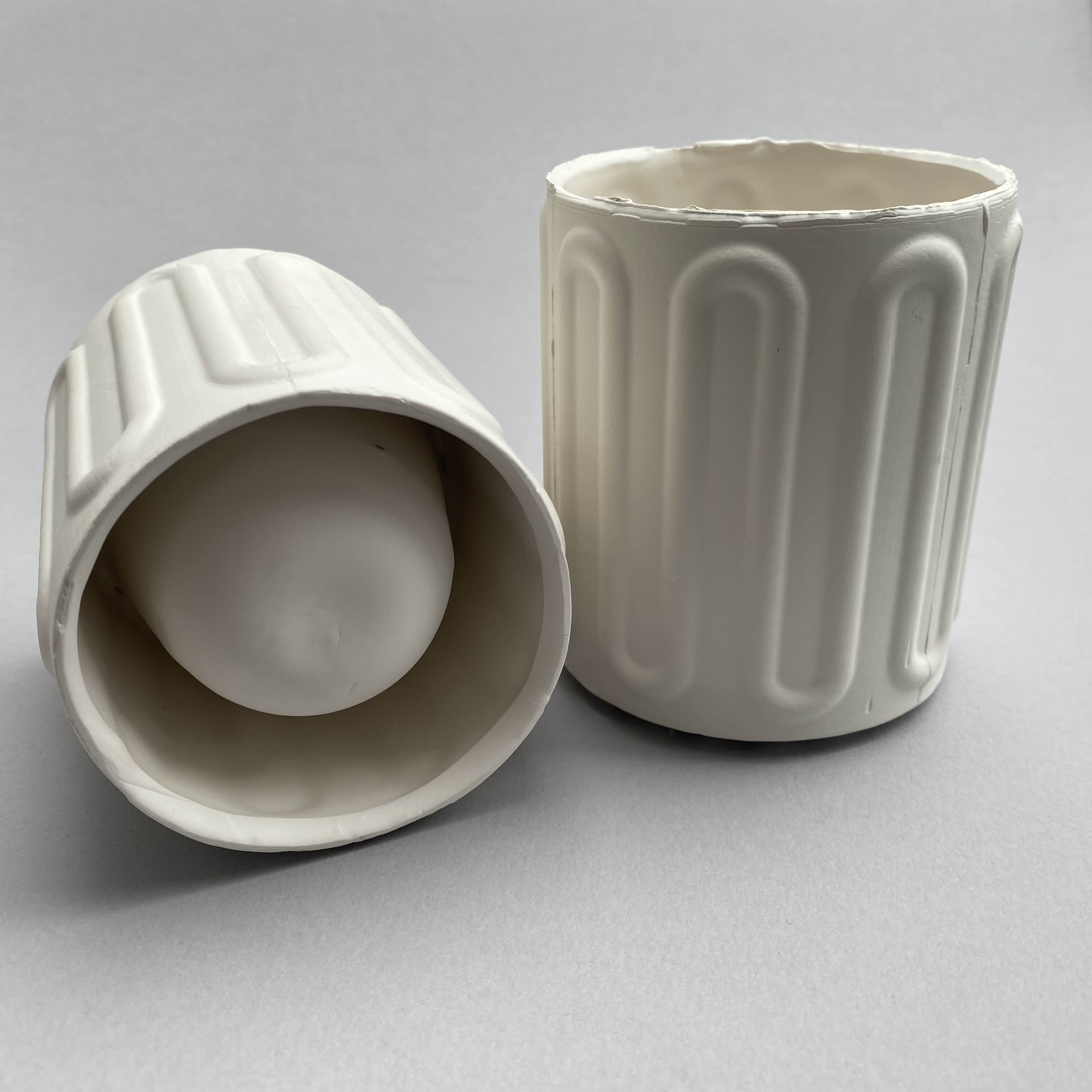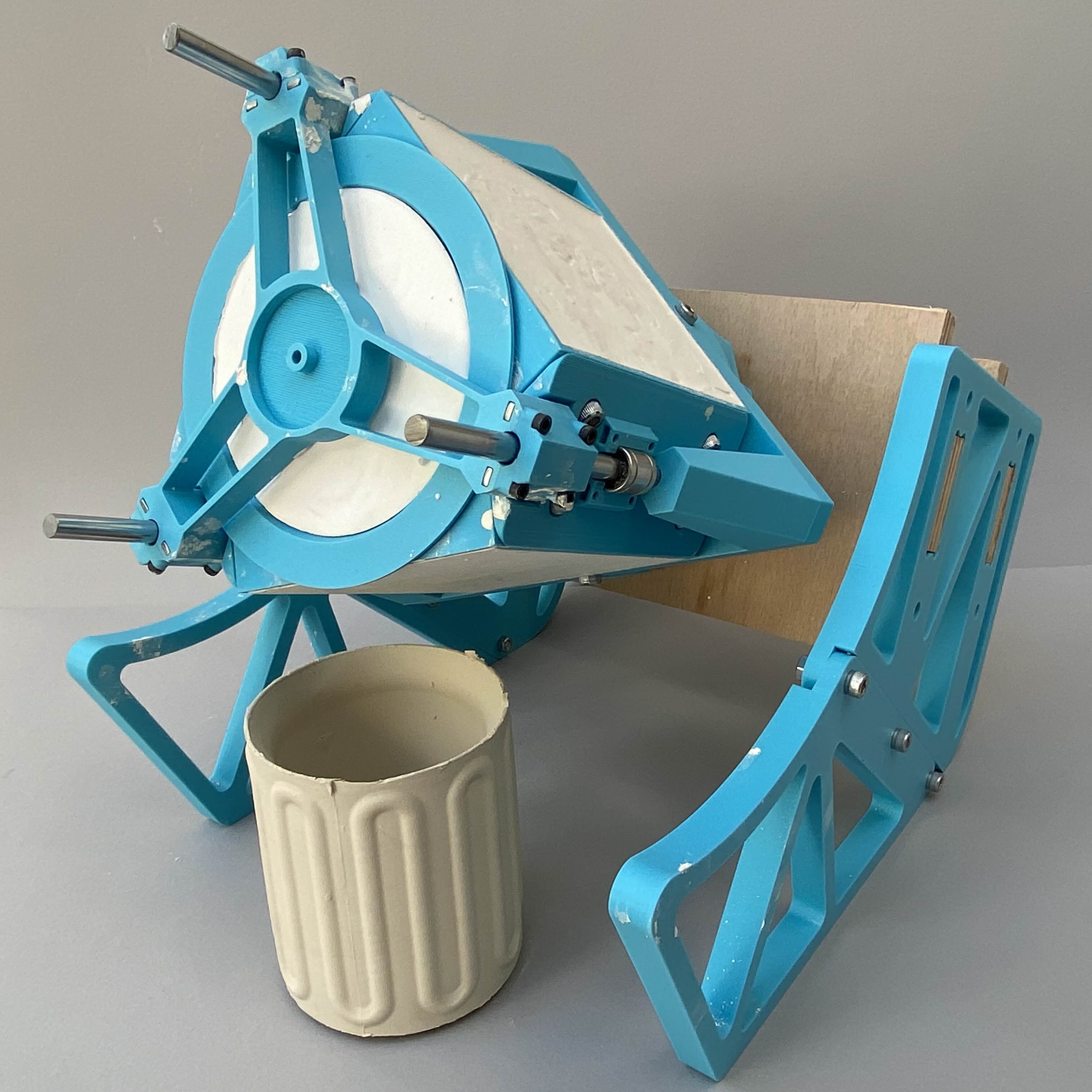
Project inception
This project came about after a friend invited me to a ceramics taster class at university and I was introduced to the process of slip casting. This process involves pouring liquid clay into a plaster mould. The plaster mould then wicks away the water from the liquid clay, producing a solid clay layer on the plaster. This led me to experiment with mould making. I designed a cup shown in the first image that I couldn’t design a handle for that I was happy with from an aesthetic point of view, so I began researching and concepting other solutions.
Handling solutions
The solution I settled on was a double-wall design with an air gap. This is an
idea I have seen implemented before and bypasses the need to design an
aesthetically compatible handle.
This necessitated a slight change to the process from a basic slip casting
process to a spin casting process to coat the complex geometry of the mould
while leaving an internal air gap.

Tool Development
To simultaneously get the desired internal and external dimensions required while preserving the internal air gap, the tool must be able to coat the surfaces with liquid clay around the air gap. To achieve this the tool must be filled with material and then completely enclosed quickly. To this end, all the parts of the tool are stacked using linear bearings vertically and held together with gravity. Releasing the central tool then proved challenging as the clay shrinks as it dries and grips on to the tool body it is wrapped around. To solve this issue, compressed air is injected through the central tool ejecting it.
Machine Integration
The tool is then integrated on to the machine chassis. This features a stepper
motor that rotates the tool and the geometry on the sides allows it to be placed
in either the upright position or rotated easily to the casting angle. The
rotating angle was chosen by taking the volume needed to evenly coat the walls
and finding an angle where that volume will cover the whole mould surface during
a full rotation.
The whole process is shown in the video at the bottom of the page, although it should be noted the
process is still a work in progress.
